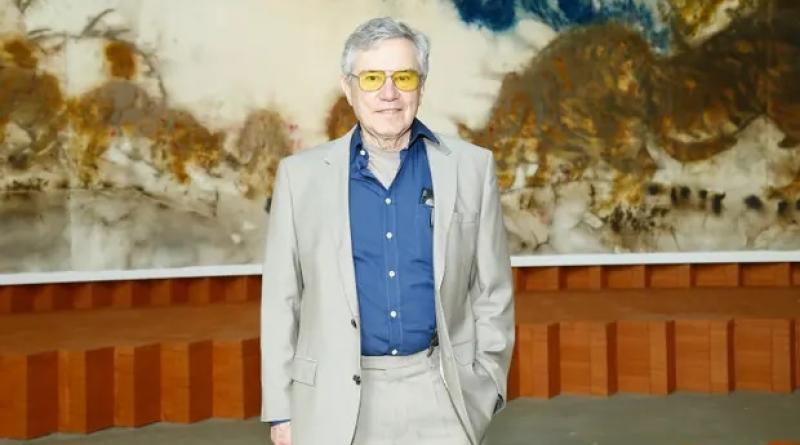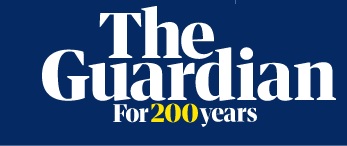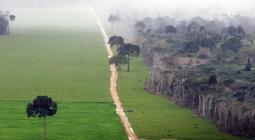The sound ecologist capturing a disappearing world: ‘70% of habitats I recorded are gone’

In a small black box theater at San Francisco’s Exploratorium, the arid plains of Zimbabwe come to life in the thrum of chattering baboons and honking geese, and the shores of California materialize in the squawks of gulls and lapping waves. The haunting song of humpback whales conjures the stillness of the deep sea, drowning out the noise of the science museum – and the world – outside.
This is The Great Animal Orchestra, a sonic voyage through seven ecosystems composed by the pioneering soundscape ecologist Bernie Krause. After its 2016 premiere at the Fondation Cartier museum in Paris and subsequent tour through Europe and Asia, the immersive exhibit arrives on the west coast for the first time.
It’s about damn time,” said Krause, who’s called the San Francisco Bay Area his home since the late 1950s.
Born in Detroit in 1938, Krause is best known for the musicality of his recordings of the natural world. For the last 55 years, he’s evoked the textures and contours of global habitats by layering hundreds of wildlife sounds into succinct tracts, or soundscapes.
Soundscape Dzanga-Sangha re-creates an early morning in the Central African Republic rainforest – precisely 8 September 1994 – beginning with the ambient hum of insects buzzing in the dark. The volume erupts at dawn as the first light triggers a chorus of wailing bird calls and croaking hyraxes, whose frequencies appear on a graph, or spectrogram, illuminating the digital walls of the theater. The insects register in the midrange of 6,000 hertz, while the hyrax barely breaks 2,000. The day climaxes with the bellowing roar of elephants thrashing in a salty marsh, a frequency so loud and so low that it sends ripples through a shallow pool of water on the theater floor.
“I wanted to give people a sense of the power of these animal narratives,” Krause said, not only to convey the beauty of these habitats, but to highlight the urgency of the climate crisis ravaging our wildlife. His personal library of more than 5,000 hours of recordings holds snapshots of a rapidly deteriorating world. In Krause’s estimation, “Almost 70% of my archive comes from habitats that have disappeared.”
Music of the natural world
Soundscape ecology is a relatively new field that studies the acoustic relationships between living organisms. As a lifelong musician, Krause contributed to the field by thinking of natural sounds “in musical terms”, he said, as well as coining the word “biophony” to describe the collective living sounds of an ecosystem. Reading spectrograms as musical notation, he noticed that animal sounds each operated at their own distinct frequencies, like singing particular parts of a song. In the early 1980s, when he posited that healthy ecosystems’ sounds function as a highly structured organization, his ideas were dismissed; the scientific community was still recording animal sounds individually.
“Guys mostly went on the field with parabolic dishes that separated birds and frogs and insects and mammals out of context, out of the acoustic fabric of the environment,” Krause said. Consequently, “they were never able to put Humpty Dumpty back together again in a way that actually sounded real.”
Krause made his first field recording in 1968 in the Muir Woods north of San Francisco, just after signing a Warner Brothers record deal. A tremendously successful electronic musician at the time, he was collecting sounds for In a Wild Sanctuary, a 1970 album remembered as a groundbreaking experiment in combining instruments with wilderness recordings and synthesizers. He recalls his immersion into the forest as a life-changing experience, a relief from his windowless recording studio and gnawing ADHD. Simply put, he said, “I felt alive.”
After contributing to the score of Apocalypse Now in 1979, Krause earned a PhD in bioacoustics and spent the next decades retreating alone into the field and simply listening, waiting patiently for the revelations to emerge. A grand epiphany struck him one night in Africa in 1983 as he started to hear the origins of human music in the rhythm and percussion of the natural world. “This is an orchestra,” he thought. “This is what enables us to dance and sing.”
An urgent plea for the environment
The Great Animal Orchestra is an audiovisual collaboration between Krause and United Visual Artists (UVA), which programmed the spectrograms to illustrate his findings for viewers who might not share his ear.
“In a healthy habitat, a spectrogram displays a wide range of animal vocalizations,” Krause explained. These too offer a stark illustration of landscapes in flux. One unedited 1988 recording featured in the exhibition is from Lincoln Meadow, California, and shows a spectrogram dense with the bright, intricate song of finches, quails, sapsuckers and sparrows. In 1989, the orchestra sounds dimmer in comparison, but the difference is particularly stark on the spectrogram: the only visible frequencies belong to a single sapsucker and the flowing river.
Between the two years, the meadow had looked exactly the same to Krause, but there lies the urgency of The Great Animal Orchestra: over the course of his career, he’s heard the disappearance of different species before any problems had become visible. As time has worn on, Krause said he’s felt little optimism in the progress against the climate crisis. Where in the 1960s, 10 hours in the field were enough to produce one hour of usable material, the time it takes today is now closer to 1,000 hours. In 2017, he and his wife, Katherine Krause, lost their home to deadly wildfires in Sonoma, California – a disaster of the type that experts say will happen more frequently and intensely as the planet warms.
Krause has been something of an outsider for most of his career. “I had this huge library of materials that nobody else was interested in,” he said, releasing albums of his soundscapes through Wild Sanctuary, the environmental outreach organization he runs alongside Katherine.
But shortly after he published his 2012 book, The Great Animal Orchestra, Fondation Cartier, a contemporary art museum launched by the French jeweler, approached him with a commission to create an immersive, audiovisual installation. The result is a poignant expression of the world’s interconnectedness through sound. According to Krause, “They had a vision for it that was much bigger than mine.”
Krause maintains hope that his work can serve as a moving plea for the environment. “When I create works of art I’m able to reach people on an emotional level” – more than any research paper ever could, he said. “I don’t know that there isn’t some young kid out there who has the imagination and power of expression to convey to enough people that we have to make some changes. But it has to happen very fast.”
cover photo:Bernie Krause in Paris, where The Great Animal Orchestra exhibition debuted. The show arrived in San Francisco Bay Area, where Krause lives, in June. Photograph: Julien Hekimian/Getty Images






